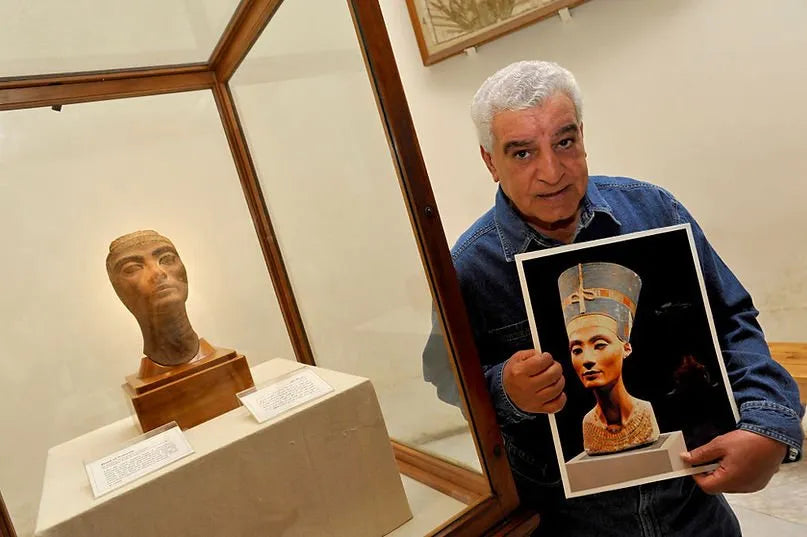Last December, Zahi Hawass, the former Minister of State for Antiquities Affairs in Egypt, and his team announced that they have found several unnamed mummies in Luxor’s Valley of the Kings. The Valley of the Kings, located along the west bank of the Nile, is known to be a place for royal burials such as pharaohs, queens, high priests, and other elites during Egypt’s New Kingdom. According to Newsweek, Hawass has been excavating these ancient tombs for decades and is currently preparing for his upcoming exhibition called Daughters of the Nile that focuses on the women of Ancient Egypt.
One of the women included in the exhibition would be the famed Queen Neferneferuaten Nefertiti, meaning “Beautiful are the beauties of Aten, a Beautiful Woman has come.” Queen Nefertiti ruled alongside her husband Pharaoh Ahkenaten—meaning “Beneficial to Aten''—also known as Amenhotep IV, from 1353 to 1336 B.C. Nefertiti is known for her radiant appearance, as engraved on a stone slab called stela found in Amarna, Egypt. After the discovery of her famous painted sandstone bust in 1913, she became a “global icon of feminine beauty and power.”
It is speculated that Nefertiti ruled even after the death of her husband under a different name. Others may disagree with this speculation of Nefertiti ruling after her husband’s death, but Hawass believes it to be the truth.
According to Hawass, “I really believe that Nefertiti ruled Egypt for three years after Akhenaten’s death under the name of Smenkhkare."
Queen Nefertiti’s fame can be attributed not only to her impressive life but also her death. One of the greatest archeological mysteries is the location of her grave and remains. However, Hawass confidently believes that one of the unnamed mummified remains discovered may be the answer to that long sought question.
Despite the several unnamed mummies found in Luxor, Nefertiti’s body and grave have not been officially identified. Hawass stated that they have “DNA from the 18th dynasty mummies, from Akhenaten to Amenhotep II or III, and there are two unnamed mummies labeled KV21a and b.” By using those DNA samples, he hopes that by October they will be able to announce the discovery of the mummified remains of Ankhesenamun, King Tut’s wife, the daughter of Nefertiti, and even the famed Queen Nefertiti herself.

Over the years, there have been multiple claims by other archeologists who believe that they discovered Nefertiti’s remains, yet these cases have been dismissed by Egypt’s Ministry of Culture or DNA sampling has proven them wrong. After all, Hawass stated it best that “ancient Egypt’s most famous figures are the most mysterious ones.”
©ArtRKL™️ LLC 2021-2023. All rights reserved. This material may not be published, broadcast, rewritten or redistributed. ArtRKL™️ and its underscore design indicate trademarks of ArtRKL™️ LLC and its subsidiaries.





